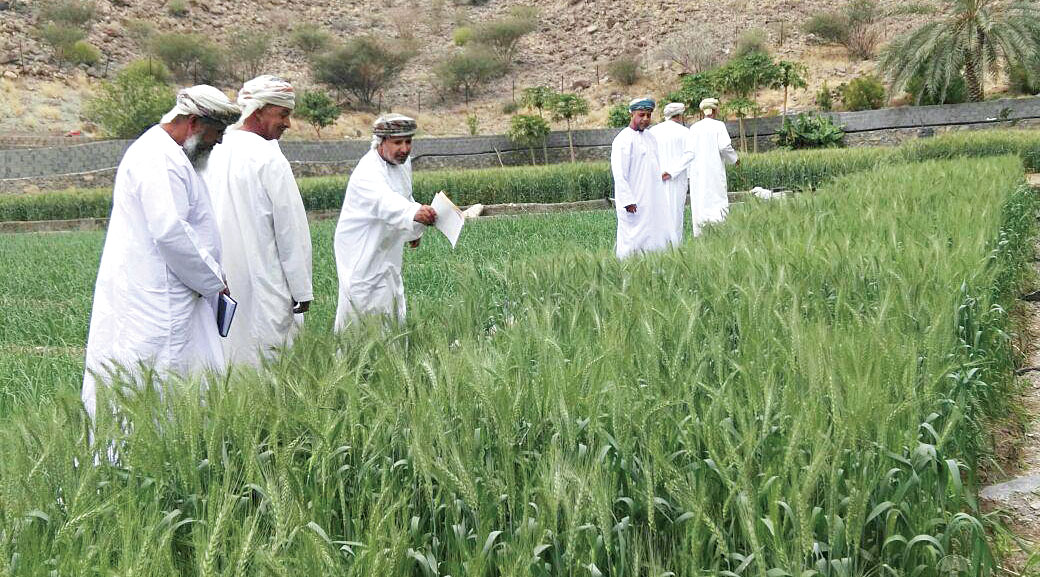

SUHAR: The cultivation of various agricultural crops is very important for the provision of various food needs. Perhaps the field crops are the most important crops, which are supported by various programmes of the Ministry of Agriculture and Fisheries.
The governorates of North and South Al Batinah are the most important governorates in field crops, accounting for 34 per cent of the total cultivated area in the Sultanate.

The Ministry of Agriculture and Fisheries is striving to implement many programmes and activities to improve the agriculture sector and exploit the available natural resources to improve production of various crops.
Salim bin Ali al Omrani, Director-General of Agriculture and Livestock in the governorates of North and South Al Batinah, said that the wheat crop is one of the most important agricultural crop, which enjoys subsidy from the government, It is also considered an inherited agricultural heritage relied upon by parents and grandparents in their daily lives and we must preserve this legacy and adopt the appropriate ideas to increase productivity, as well as quantity according to the available resources.
He explained that the expansion project in the cultivation of wheat crop, which is carried out by the Ministry of Agriculture and Fisheries, aims to increase the cultivated area of this important crop and spread it through the exploitation of modern technologies, especially modern irrigation techniques, machinery and equipment used in agriculture and harvesting operations, as well as provision of improved seeds.
In addition, attention should be given to awareness and technical aspects to achieve the planned goals of the programme that includes cultivating the improved Omani varieties of the wheat crop, as it is the basis of the agricultural process through the Omani agricultural research efforts to produce varieties with high quality and productivity.
He added that one of the most important variety of wheat to be cultivated this season is “Wadi Quriyat 110, 226”, in addition to the cultivation of other local improved varieties. He said that the project aims to grow about (200 acres) of wheat, which is expected to produce about 250 tonnes in both governorates. He also said that the average productivity per acre is expected to be 1,200 kgs, which is a good rate compared to the level of climate challenges and environmental factors.

About 20 barley fields, 28 fields of maize, and other fields for Fenugreek, broad beans and cow beans will be distributed due to their importance for the daily uses of Omanis, in addition to the demand for high quality by some neighbouring countries.
Al Omrani touched on the honeybees programme, which took an important aspect in the governorates of North and South Al Batinah in providing honey and opening wide areas for beekeepers and those interested in beekeeping.
He added that special attention is given to women in the countryside where 53 land plots were given to them, in addition to 104 land plots for the development and beekeeping in 2016. He hoped that the programme would gain wider horizons in the upcoming years, where land plots are given to beekeepers as honeybees are enjoying widespread reputation at the international level and obtaining high-reputation certificates in international forums.
The results of the agricultural census 2012/2013 showed that the governorates of North and South Al Batinah are leading the agricultural and livestock sector, which is the real agricultural weight in the Sultanate as cultivated areas accounted for 37 per cent of the total cultivated area in the Sultanate and 80 per cent of the total planted area with vegetable crops in the Sultanate.
This is because the governorates of North and South Al Batinah enjoy temperate climate and slight low temperature, in addition to the large land that is suitable for the cultivation of most agricultural crops. — ONA
Oman Observer is now on the WhatsApp channel. Click here



